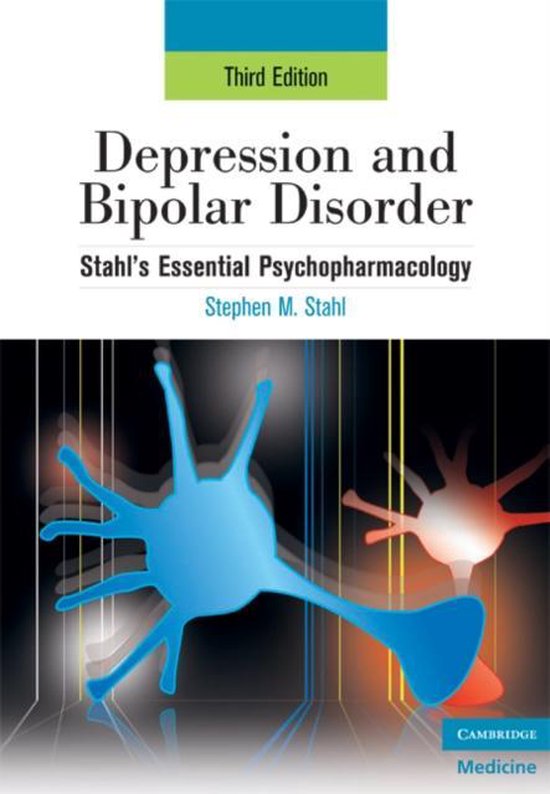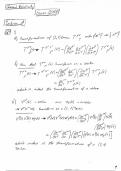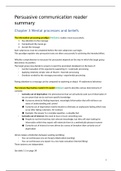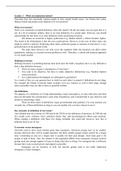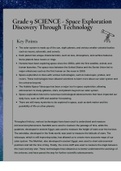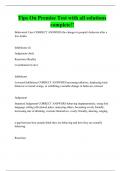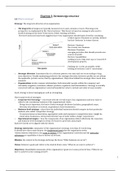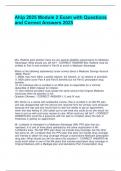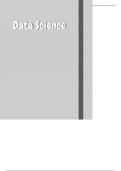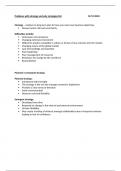Goal: describe complaints, appearance and existence in an actionable psychopathological format that
will result in a structural diagnosis, diagnostical classification and treatment.
- Complaint – request for help
- Specific anamnesis
- Hetero-anamnesis
- Psychiatric hisotyr
- Specific psychopathological symptoms (MSE)
- Phycsical exam
- Biography and family history
- Intoxication: smoking, alcohol, etc.
Abstract & conclusion (structural diagnosis)
Basics of psychiatry:
Stress-vulnerability model: when a patient has more vulnerabilities and stress at a certain
time point he will go from no disorder to disorder. It is too simple, there is a grey zone.
Shows that there are two main factors for becoming ill, balance between vulnerability and
protective factors and stress.
Bio-psycho-social model: Also called dynamic stress-vulnerability model, problems and
symptoms vary over time in severity, frequence and impact on functioning. It all depends on
experiences you have during the day and your background of vulnerabilities and protective
factors. We look at this from the biological (medical) model: brain areas/NT/genes,
psycholocial model: behavioral theory/learning/coping, social or systemic models:
connection with family and friends/living environment. Note: we have done a lot of research
on genes in psychiatry however there are non that we use as clinically relevant.
Psychiatric assessment what shifted the balance?
The psychiatric assessment is a systematic exploration of the patients subjective experience and
point of view. We look at psychiatric signs (emotion, mood, interpersonal rapport) expressive. It is
something of one moment, not a summary of past time. In the practical field we need then a
psychiatric diagnosis (+why did someone get ill) for a diagnosis/classification we need symptoms and
a patient who has the need for care and the explanatory model (reason) to be able to decide how to
help a patient. Questions we are interested in:
- What are your complaints/symptoms?
- What are your vulnerabilities/protective factors?
- What do you want to achieve here and in life?
- What do you need from us, how can we help?
So approach symptoms (MSE)-> need for help/care (social factors, coping/defense) -> explanatory
model (biography look also from biology, behavioral theory and contextual problems maybe early on
in life/physical examination) -> treatment plan. The goal of the MSE is to get a differential diagnosis.
However for the whole structural diagnosis we need history/biography for explanatory models.
Biography:
What are we asking for?
- First development: type of pregnancy (mother) and birth, birth weight, premature, early age
feeding problems, infections, senses and motoric development
- Childhood: eating problems, sleeping problems (nightmares), nail biting, bedwetting,, thumb
sucking,, stuttering, tantrums, traumatic experiences (loss of parents, abuse, violence),
memories of atmosphere and behavior in house and towards other people (happy, shy,
anxious, aggressive, going along, lying a lot, attachment)
, - School period: start and end of eduction, exams (change/doublure), absence, remembrance
of school period, learning and behavioral problems, bullying, friends, hobbbies outsude
school, punishments (by teachers for something), relation with classmates and teachers
- Education/training: eduction, problems with exams, type of education, relation with teachers
and classmates, independence from parents
- Jobs: first job age, other jobs/chronology, change of job or fired, reasons for this
- Psychosexual development: puberty changes how did it go (early or late, relationship with
parents, anxiety depressed suicidality), behavioral problems (opposite, aggressive, contact
with justice), sexuality (talk about sexual orientation/sexual relationships)
- Special events: sexual abuse, war trauma, natural disasters, fleeing
Specific anamnesis of complaint:
- Quality (nature) what kind of complaint is it? = subjective so ask what do you mean, what
does it mean in your terminology
- Chronology
- Quantity when and how much
- Setting: where
- Factors of influence
- Associated symptoms
- Patient’s vision on complaints = insight in disease awareness
MSE
Observation and exploration: ask what did not come up in observation, ask on the subjective
experiences of mental symptoms. Mixed with the whole conversation, not done in order but during
the interview. Ask in a manner that makes it fit in the story:
- General presentation:
o External characteristics (as objective as possible)
o Age appearance related to his birth age (formal) - looking older related to
depression etc. younger related to lower than average IQ.
o Contact/interaction aspects (eye contact/staring)
o Presentation of the complaints
o Your own feelings induced by the patient – feel anxious in paranoia patients or feel
manipulated in personality disorder
- Cognitive functions
o Consciousness: somnolent, subcomatose (GCS) -> leave there is no way to talk to the
patient, we can only do a reliable psych assessment if patient is fully awake with
clear conscienceness. That is why conscience is the first thing.
o Attention & concentration: get attention and sustain attention (distractions).
Attention something you observe (easily distracted) and concentration is something
which you ask (can you focus on one thing?)
o Orientation: time, place, person
o Intellectual functions:
General judgement, ability for abstraction, executive functioning,
intelligence! (highest education level), language, math
o Immediate recall and short/long-term memory: what happened 5 minutes ago or say
3 words then ask them back a couple minutes later. Long term memory you learn
about in the biography
o Perception:
Hallucinations: perceive things that other people do not in either one of the
five senses: touch, taste, smell, see, hear (auditory: bad and good voices )
Illusions: misinterpreted actual stimulus
, Derealization (feeling of not being on the earth, floating around, not being
part of this reality), depersonalization (alienation of body parts, this arm
does not belong to me, I do not recognize the face that I see) -> dissociative
disorders
Recognition: object recognition, sensory experiences, body image -> anorexia
or body dysmorphic disorder (nose is too big, head is too heavy)
o Thinking
Form: speed (slow in depressed fast in mania), course and coherence (can be
highly associated)
Content: pre-occupation (can only talk about one thing), obsession (intrusive
thoughts that can make patient very anxious), delusion (patient is thinking
something that does not fit in with cultural context/reality, and which is an
unshakeable belief from patient cannot be changed in mind)
- Affective functions
o Mood (ground tone) and affect (visible emotions) type of and modulation (blunted-
depression, labile quickly changing – intoxication)
o Somatic (body) affective features and symptoms: respiration, blushing
o Suicidal ideas/plans
- Conative functions
o Psychomotor:
General
Facial expression
Speech
o Motivation and behavior
Drive, urge-driven (addiction, stealing,), compulsions, self mutilation
Loss of decorum (jokes, dressed)
o Personality – does not always have to be there but if you notice it then yes
Defence mechanisms
Coping
Next aim is to collect features that fit with a disorder, however this also fluctuates, there is overlap of
symptoms between disorders. From this we will get a differential diagnosis. Then what about the
rest? Below cognitive functions or affective or conative there can be biological problems or social
history that influences disorders withing these functions = explanatory models.
, 2. Dissection (Macroscopical anatomy of the human brain)
There are a lot of genetic diseases accompanied by neurological symptoms. The immature (young)
and elderly are susceptible to neurological disorders, why? At a young age there still is a lot of brain
development- prefrontal cortex is last (impulse, executive, personality), for the elderly there is again
regression. There are high high health costs associated with different psychiatric problems
(dementia, mood disorders, anxiety disorders). Mood disorders have half of the prevalence of
anxiety disorders however mood disorders have a way higher cost.
The nervous system controls almost all body functions (homeostasis, movement and sensation) it has
a very high metabolic rate, it utilizes 20% of total body oxygen, 25% of glucose. Your brain cannot
survive for long without glucose.
Cells in the CNS are the following: neurons, then four types of glial cells: oligodendrocytes (are glia
with as a function producing the myelin sheaths around axons, there are nodes of ranvier and the AP
jumps from one node to another -> very high speed0, astrocytes (part of the BBB, remove NT from
synapses, star shaped provide support K+, pH and neurotransmitter buffering – create ideal
environment), microglia (macrophages cause immune response and phagocytosis), ependymal cells
(lie along ventricles and form a barrier and the CSF) . Classification of neurons we can do according
to: 1. Number of neurites (uni/bi/multipolar) 2. Shape (stellate, pyramidal), 3. Connections (sensory,
motor), 4. Axon length (local or projection neurons), 5. Neurotransmitter (Ach, DA). Something about
synapses and neuroplasticity.
How do we distinguish central and peripheral nervous system? Everything within the bony structure
is the CNS. Then everything out of there is the PNS which we can divide into the somatic nervous
system (voluntary, you can control it-> muscles and senses), and autonomic (unvoluntary). The ANS
we can futher divide into the PSNS and the SNS.
Overall organisation of the brain we can divide into:
- Forebrain: telecephalon (cortex,basal ganglia), diencephalon (thalamus and hypothalamus)
- Midbrain: mesencephalon
- Hindbrain: metencephalon (cerebellum), myelencephalon (medulla oblongata) -> all that is
needed to survive
Weight of the brain in general: 1,5 kilos.
In a coronal section (over de breedte kijken) we look at medial and lateral). If we do sagittal section
then we look (over de lengte) and then we want to know anterior and posterior.
Meninges: dura (stiff, tough, white sheath, adheres to skull), arachnoid (thin, spider web, not in sulci
but around brain and spinal cord), subarachnoid space with blood vessels and CSF, pia (going into the
sulci, thin and soft with blood vessels, adheres to brain surface).
Our cerebral cortex is 80% of the weight of the brain. Gyri (bump) sulcus (dent), a very deep sulcus is
called a fissure and these divide the brain lobes. On to the lobes we have:
- Frontal: executive functions, language, personality, motor
- Temporal: hearing, memory
- Occipital: vision
- parietal: sensation, vision, eye-hand coordination – the ‘homonculus’
- Insula: exact functions not completely known, maybe something to do with awareness
Korbinian Brodmann made stains and separated brain into different areas 52. Broca would be the
first one to use that system. Broca’s area is in the frontal lobe and it is related to motor speech – he
had a patient who could only say tan and found huge problem in the left ventral frontal lobe
(Brodmann 44/45). Wernicke is located in the temporal lobe and is related to understanding of
language. The brodmann areas were a means of communication between scientists, a common
language. To discover function they used lesion studies as broca did. A second option is electrical
stimulation of a human cortex during surgery with a patient who is awake under local anaesthesia
and see what is happening – canadian neurosurgeon=experimental neurosurgery.


